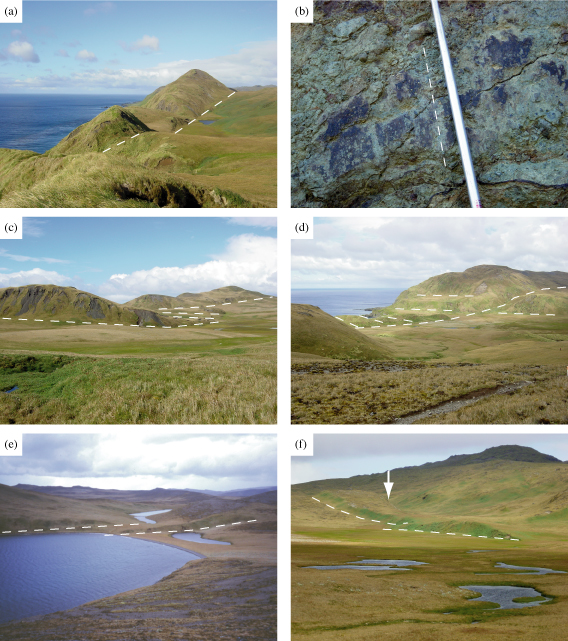Publications
° Daczko, N.R., Wertz, K.L., Mosher, S., Coffin, M.F.,
and Meckel, T.A., 2003. Extension along the Australian-Pacific transpressional
transform plate boundary near Macquarie Island. Geochemistry, Geophysics, Geosystems (G3), 4(9),
1080, doi: 10.1029/ 2003GC000523.
Abstract
The Australian-Pacific transform plate boundary fault zone along the Macquarie
and McDougall
segments of the Macquarie Ridge Complex (MRC), south of New Zealand, is characterized
by dominantly normal faults and pull-apart basins, in apparent conflict with
the regional transpressional tectonic setting. We propose that present-day
curvature of the transform is inherited from a preexisting divergent plate
boundary and that the overall extensional kinematics shown by faults along
the main plate boundary trace and exposed on Macquarie Island result from
local stresses related to right-lateral, right stepping, en echelon plate
boundary faults and not to the current transpressional setting. Transpression
along the Australian-Pacific transform plate boundary has resulted in uplift
along the �1500 km long Macquarie Ridge Complex. Macquarie Island, the only
subaerial exposure of the complex, sits atop a �5 km high, �50 km wide submarine
ridge of oceanic crust and lies �4.5 km east of the major active plate boundary
fault zone. Thus Macquarie Island and the surrounding seafloor provide a
unique opportunity to study an active oceanic transform fault using complementary
marine geophysical and land-based geological data. Mapping of recent faults
affecting the topography of Macquarie Island shows that the island is extensively
cut by high-angle normal faults forming pull-apart basins. Furthermore, evidence
for reverse motion is rare. Using marine geophysical data, including swath
bathymetry, reflectivity, and seismic reflection data, collected along the
Australian-Pacific plate boundary north and south of the island, we have
defined a 5–15 km wide plate boundary zone. A series of right stepping en
echelon faults, within this zone, lies along the main plate boundary trace.
At the right stepping fault terminations, elongate depressions (�10 km wide
and 1.2 km deep) parallel the plate boundary, which we interpret as extensional
relay zones or pullapart basins. We propose that transpression is partitioned
into en echelon strike-slip faults at the plate boundary and a convergent
component that flexes the crust, causing the anomalous bathymetric ridge
and trough morphology of the McDougall and Macquarie segments of the MRC.

|
 ARC Centre of Excellence for Core to Crust Fluid Systems
ARC Centre of Excellence for Core to Crust Fluid Systems